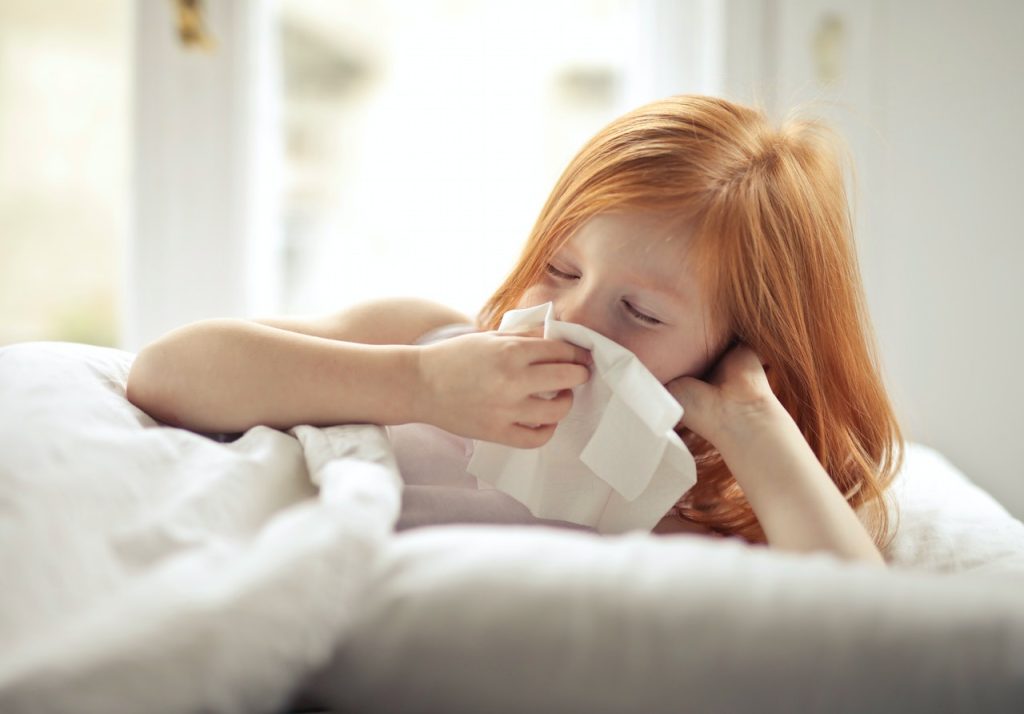Nasal ‘Molecular Shield’ May Soon Treat a Common Pollen Allergy

Approximately 40% of the European population are allergic to pollen, and their symptoms cause an estimated loss of 100 million school- and workdays every year. The prevalence of hay fever has been surging for decades and this is likely to continue – a change so fast that genetic and health changes can’t be solely responsible. Improved hygiene, the widespread use of antibiotics and antiseptics, lifestyle changes, diet, pollution, and the climate crisis are also thought to play a major role in this increase.
But now there is new hope for sufferers. As proof-of-principle, researchers have engineered an antibody from mice, which when applied to the inside of the nose stops mice from developing hay fever and asthma symptoms in response to mugwort pollen. Mugwort is the most common cause of pollen allergies in central Asia and parts of Europe, where between 10% and 15% of people with hay fever are allergic to it. The article was published in Frontiers in Immunology.
“This is the first time a monoclonal antibody designed to block a specific pollen allergen has been delivered directly into the nose, and been shown to protect against allergy symptoms in the upper and lower airways,” said Prof Kaissar Tabynov, the director of the International Center for Vaccinology at the Kazakh National Agrarian Research University (KazNARU) in Almaty, and the study’s senior author.
“In the future, similar antibodies could be developed for other major pollen allergens, such as ragweed or grass. This opens the door to a new generation of precision allergy treatments that are fast-acting, needle-free, and tailored to individual allergen sensitivities.”
‘Molecular shield’
Traditional treatment is allergen-specific immunotherapy: patients are exposed to gradually increasing doses of the allergen, until they become desensitised. However, this doesn’t work for all patients, and in recent decades, so-called ‘allergen-specific monoclonal antibody therapy’ has increasingly come to the fore as an alternative.
In allergen-specific monoclonal antibody therapy, researchers engineer antibodies of the IgG class, which either specifically recognise the allergen itself and block it, or bind to IgE antibodies in general. In either case, this prevents the allergen from triggering an allergic reaction. A disadvantage is that typically, these antibodies needed to be injected into the bloodstream – until now.
“Our method acts immediately and locally at the lining of the nose, by neutralising the allergen on contact. This ‘molecular shield’ not only prevents IgE antibodies from being activated, but may also reduce inflammation through other mechanisms, such as calming immune cell responses and promoting regulatory pathways,” explained Tabynov.
The researchers injected mice with a dose of mugwort pollen, stimulating them to produce antibodies against it. The mice were then humanely euthanised and their spleens harvested to isolate white blood cells. The use of mice was approved by the local Institutional Animal Care and Use Committee, under the Ministry of Health of the Republic of Kazakhstan.
The white blood cells were then fused with laboratory-grown cancer cells from mice with multiple myeloma. This yielded five immortal ‘hybridoma’ cell lines which each secreted a single type (hence ‘monoclonal’) of antibody against mugwort pollen. A suite of diagnostic tests showed that the most powerful was produced by hybridoma cell line XA19, which was selected for further development.
Reduction in allergy symptoms
To test their efficacy, purified antibodies from XA19 were administered to the interior of the nose of five mice, which had been stimulated to become allergic to mugwort pollen through injections of pollen extract. Five additional mice served as positive control: they had been similarly sensitized but received a placebo. A further five mice were the negative control, neither sensitized to the pollen nor given monoclonal antibodies. Three weeks later, all mice were exposed three times under anaesthesia to an aerosol of mugwort pollen, as well as to pollen extract delivered directly inside the nose.
The results showed that the sensitized mice given the XA19 antibody displayed a major reduction in allergy symptoms compared to controls: for example, they showed a weaker ear swelling response to the pollen (a common allergic reaction in rodents); they rubbed their nose less frequently, indicating less irritation of the upper airways; their full lung capacity was preserved upon exposure to the pollen; and they showed less inflammation inside the nostrils. Inside the lungs, levels of two inflammation-promoting molecules called cytokines were likewise reduced.
The researchers concluded that the monoclonal antibody from XA19 is effective in blocking allergic reactions against mugwort pollen triggered by IgE, at least in mice.
“Before this treatment can be tested in people, we need to adapt the antibody to make it suitable for humans – a process called ‘humanisation’ – and conduct additional preclinical safety and efficacy studies,” said Tabynov.
“If these are successful and provided we have adequate support, we could begin clinical trials in two to three years, though bringing it to market would likely take five to seven years. We are already planning for this transition and working on scaling up production.”
Source: Frontiers


